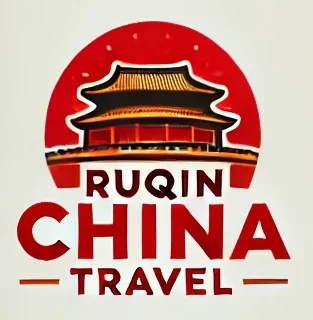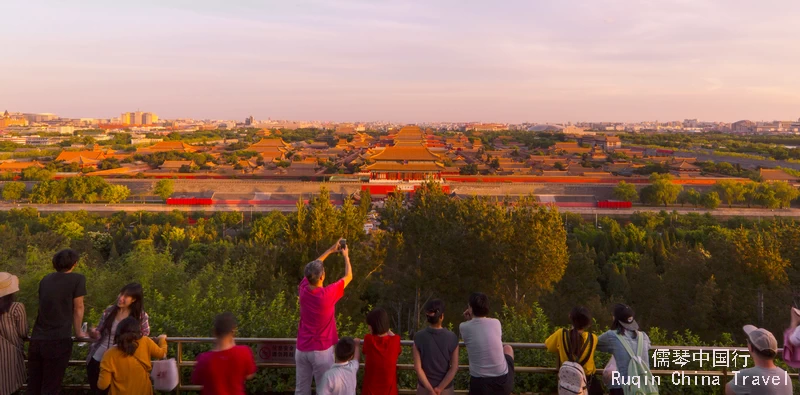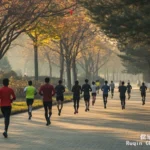In this complete guide, we’ll walk you through everything you need to know to explore the Forbidden City with ease. From ticket details to insider tips, here’s how to visit the Forbidden City and make the most of your trip.
The Forbidden City is one of Beijing’s most iconic landmarks. This vast imperial palace complex offers a glimpse into China’s rich history and culture. For foreign tourists, visiting the Forbidden City is an unforgettable experience, but planning a trip can be overwhelming.
1. A Brief History of the Forbidden City
Before we dive into the details of how to visit the Forbidden City, it’s essential to understand its historical significance. Built in the early 15th century during the Ming Dynasty, the Forbidden City served as the imperial palace for 24 emperors over nearly 500 years.
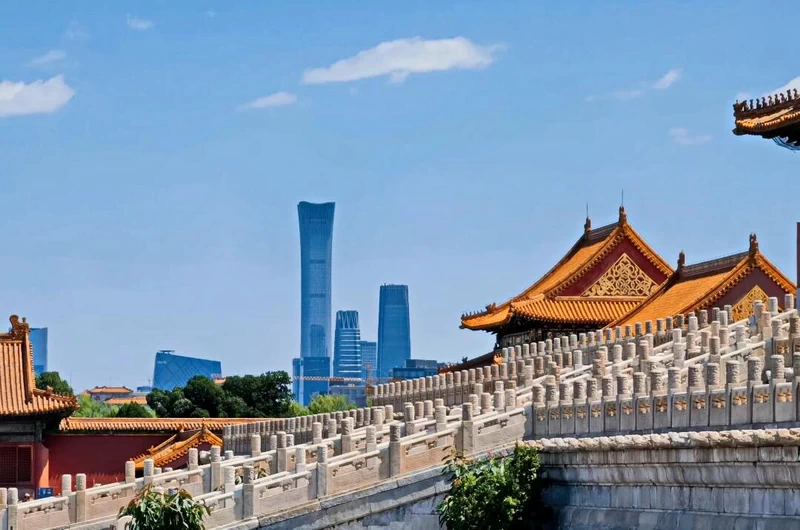
The name “Forbidden” refers to the fact that ordinary citizens were not allowed to enter. Today, this UNESCO World Heritage site is open to visitors, showcasing China’s impressive architecture and imperial treasures.
2. How to Get to the Forbidden City
The Forbidden City is easily accessible. Whether you’re coming by subway, bus, or taxi, there are several convenient routes that will guide you straight to this iconic landmark.
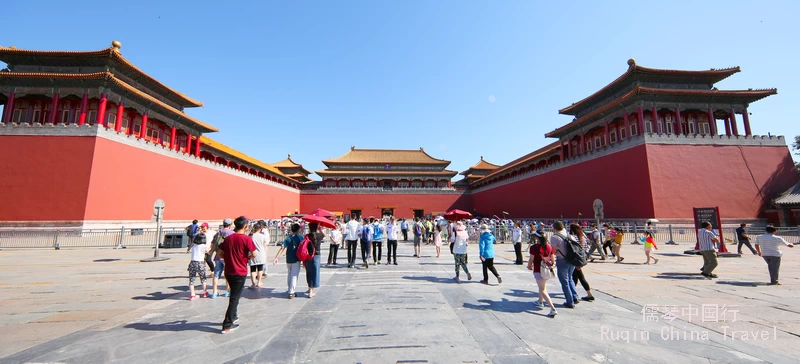
The Four Gates of the Forbidden City
The Forbidden City has four gates. The south gate, Wu men (Meridian Gate), is the only entrance. The north gate, Shenwu men (Gate of Divine Prowess), is the main exit. Most visitors follow the typical south-to-north visiting route.
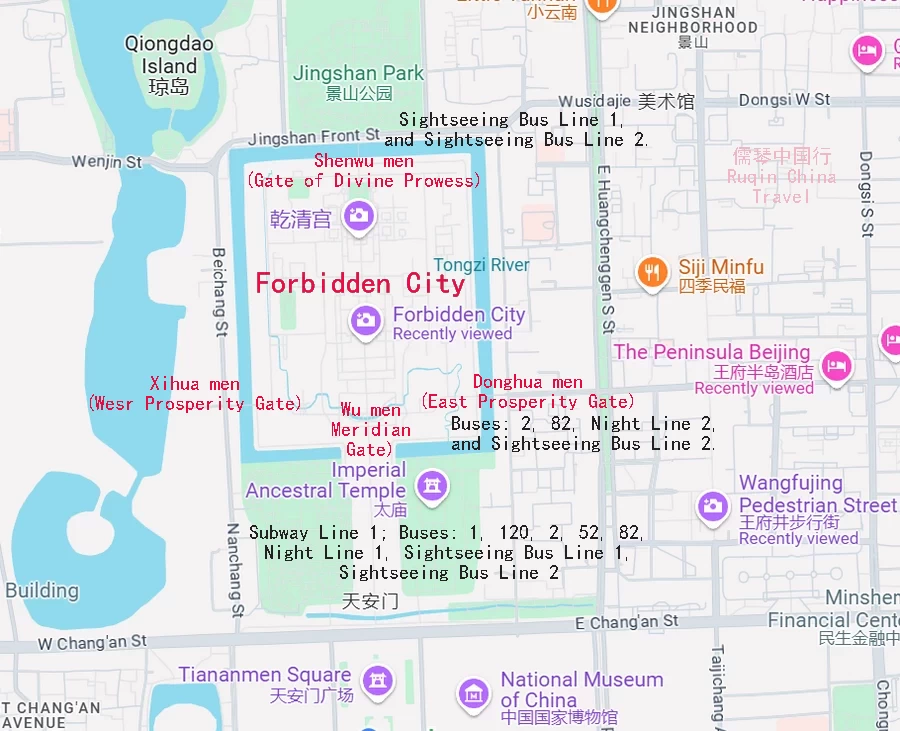
After exiting through the north gate, many choose to visit Jingshan Park or Beihai Park. However, if you plan to visit Wangfujing Street or other places east of the Forbidden City, you can exit from the Donghua men (East Prosperity Gate) (but no entry!). The Xihua Men (West Prosperity Gate) is primarily used by staff. So to visit the Forbidden City, you should enter through the south gate.
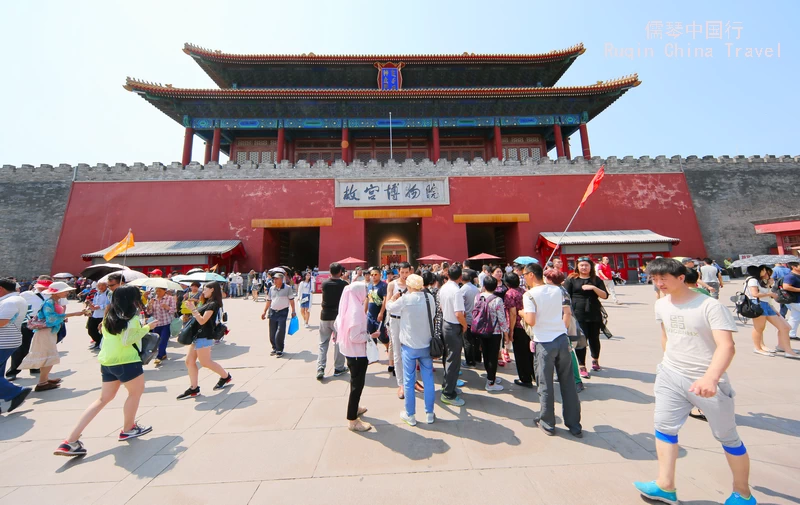
Subway
The most convenient way to reach the Forbidden City is by subway. Take Line 1 and get off at Tiananmen East or Tiananmen West station. Both stations are within walking distance of the Forbidden City’s entrance.
Public Buses
There are several bus routes that pass near the Forbidden City in the south. You can check the local bus map or use a navigation app to find the most convenient bus route for your location. Look for buses that stop at Tiananmen Square or the Forbidden City.
Getting to Tiananmen East Station, take bus number:1, 120, 2, 52, 82, Night 1, Sightseeing Double-Decker Bus 1, and Sightseeing Double-Decker Bus 2.
Taxi or Ride-Hailing
Taxis are widely available in Beijing, and you can simply hail one and ask the driver to take you to the Forbidden City (故宫, gùgōng) or show them the address in Chinese characters. Alternatively, you can use ride-hailing apps such as Didi to book a taxi or private car to take you directly to the entrance.
Bicycle or Walking
Beijing has a well-developed bicycle-sharing system, and you may find bike stations near the Forbidden City. Consider renting a bike and riding to the entrance if you prefer a more active mode of transportation.
Walking: If you are staying in the city center or nearby areas, you can also walk to the Forbidden City. It is located just north of Tiananmen Square, making it within walking distance from popular tourist areas like Wangfujing Street or the Tiananmen Square subway stations.
Public Transportation at the three Gates
When you finish your vist to the Forbidden City, you either leave from the north gate (Shenwu men) or the east gate (Donghua men). If you want to use the public buses to go to other placea, please check out the following public transportation information:
Shenwu men (North Gate): Trolleybus routes 101, 103, 109, 124, and buses 58, Night Line 13, Sightseeing Bus Line 1, and Sightseeing Bus Line 2.
Donghua men ( East Gate): Buses: 2, 82, Night Line 2, and Sightseeing Bus Line 2.
Wu men (South Gate): Buses: 1, 120, 2, 52, 82, Night Line 1, Sightseeing Bus Line 1, Sightseeing Bus Line 2, and Line 1 of the subway.
When using public transportation, it’s advisable to have the name of the Forbidden City written in Chinese characters or have a map with the location marked to help communicate with taxi drivers or ensure you are on the correct bus or subway route.
Please note: The Palace Museum does not have a dedicated parking lot. The nearest public parking is on Jingshan Hou Street, and parking spaces are limited. It is recommended that visitors take public transportation to the Palace Museum.
3. Best Time to Visit the Forbidden City
When planning how to visit the Forbidden City, timing is crucial. The palace can get crowded, especially during weekends, holidays, and peak tourist season (April to October). For a more peaceful experience, try to visit on a weekday and arrive early in the morning. The gates open at 8:30 AM, and arriving early allows you to avoid the largest crowds.
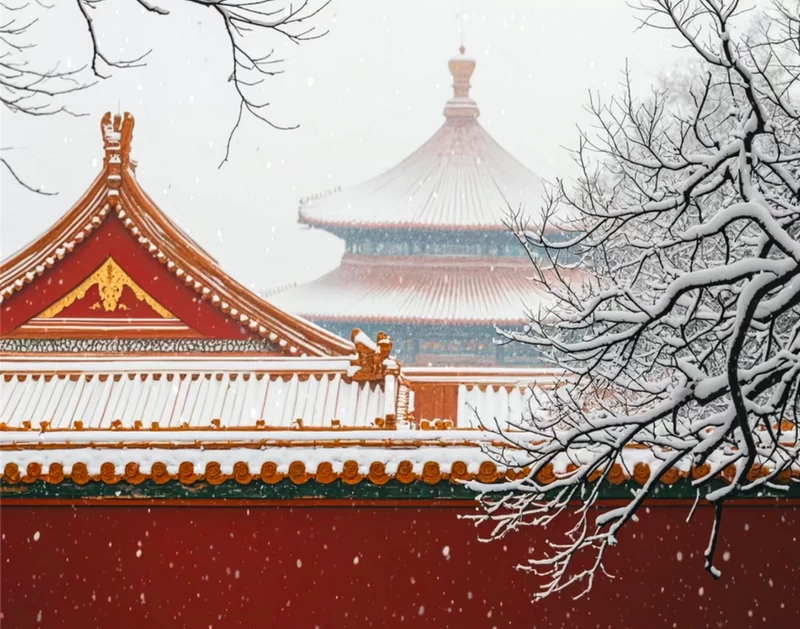
The best time of year to visit is either spring or autumn when the weather is mild. Summers in Beijing can be hot and humid, while winters are cold, which may make the outdoor portions of the palace less enjoyable.
Best Time of the Day
The tickets for the Beijing Forbidden City are divided into morning and afternoon sessions. Morning session tickets require entry before 12:00 PM, while afternoon session tickets allow entry starting at 11:00 AM.
For the afternoon session: ticket checking begins at 11:00 AM, and the latest entry time is 4:10 PM during peak season, or 3:40 PM in the off-season.
It is recommended to purchase afternoon session tickets to avoid the peak hours around 10-11 AM. Entering between 12:30 PM and 1:00 PM allows you to skip the crowds and enjoy a more comfortable and peaceful visit.
Note: If you’d like to spend the whole day in the Forbidden City, it’s best to start your visit in the morning and continue into the afternoon. The Forbidden City does not have a specified exit time. If you have a morning ticket, you can explore the site for the entire day.
4. Forbidden City Tickets and Opening Hours
You can buy tickets online through the official website of the Palace Museum or through various travel agencies and ticketing platforms.
| April 1st – October 31 ( 8:30 – 17:00 ): Last Entry: 16:00 | Entrance ticket: 60 yuan/person |
| November 1st – March 31 (8:30 – 16:30) Last Entry: 15:30 | Entrance Ticket: 40 yuan / person |
| Some exhibits within the complex | Treasure Gallery :10 yuan Clock and Watch Gallery:10 yuan |
Note: Forbidden City is closed for the entire day every Monday ( except Chinese national public holidays).
How to Book your ticket online?
To book tickets to the Palace Museum, you can take the following steps:
Visit official channels: You can make an appointment on the Palace Museum’s official website or through the OTA Platform like Viator ( Best choice for English speakers ! ):
👉Book Your Forbidden City Tickets Now via Viator ( easier for English speakers)
Fill in the information: During the booking process, you need to fill in your name, ID number and other information, and select the date and time you want to visit;
Book 7 Days in advance: The Palace Museum does not offer same-day tickets, so it is recommended that you make a reservation at least 7 Days in advance;
Check ticket details: Find out the ticket price (watch Hall, Treasure Hall and exhibition reservation) and whether a reservation is required, please refer to the booking page.
Use a valid ID: You are required to bring the original valid ID used at the time of booking to check in on the day of the visit.
Refund Policy: If you need to cancel the ticket, it should be handled through the original booking channel before 24:00 on the day before the visit, otherwise it may be counted as the number of cancellations.
Note: Please note that unused tickets can be refunded before 24:00 on the day before the visit, but not after 20:00 on the day of the visit.
Consultation Hotline
400-950-1925
Service Hours: 08:00–20:00
5. Must-See Attractions in the Forbidden City
The Forbidden City is vast, with over 980 buildings. However, there are several key attractions you can’t miss during your visit. Let’s take a closer look.
First, the Hall of Supreme Harmony (太和殿) stands at the heart of the complex. It’s the largest wooden structure in China and was the site of important ceremonies like coronations and royal weddings. Its massive scale and intricate roof details symbolize the emperor’s supreme power.
Next, make sure to visit the Hall of Central Harmony (中和殿) and the Hall of Preserving Harmony (保和殿). These halls were used by the emperor for rehearsing and preparing for ceremonies. They sit along the central axis of the palace, showcasing the exquisite architecture of the Ming and Qing Dynasties.
For a more intimate look at imperial life, head to the Palace of Heavenly Purity (乾清宫), the residence of the emperor, and the Palace of Earthly Tranquility (坤宁宫), where the empress lived during the Ming Dynasty. These palaces offer a glimpse into the daily lives of the royal family.
Finally, don’t miss the Imperial Garden at the northern end of the Forbidden City. This peaceful space, with ancient trees, rockeries, and pavilions, contrasts beautifully with the grandeur of the surrounding buildings. The Treasures Gallery, filled with rare artifacts, is another must-visit. It showcases the wealth and cultural heritage of China’s imperial history.
6.Tour Guide Service in the Forbidden City
When visiting the Forbidden City, you have the option of using audio guides or booking a live tour guide to enhance your experience.
Audio Guides:
- Availability: Audio guides are available in 40 languages, providing flexibility for visitors from around the world.
- Rental Locations: You can easily rent the audio guide at either the Meridian Gate (午门) or Shenwu Gate (神武门) upon arrival.
- Cost: The fee for an English-language audio guide is 40 RMB, and a 100 RMB deposit is required when you rent the device. The deposit will be refunded when you return the guide at the designated drop-off points.
- How to Use: The audio guide is a convenient and flexible way to explore the Forbidden City at your own pace, providing detailed information about the historical sites, art, and architecture within the palace complex.
Live Tour Guides:
- Booking a Live Guide: If you prefer a more personalized experience, you can opt for a live guide. These guides offer in-depth explanations and can provide a more engaging experience as you explore.
- How to Book: You can book a live tour guide either in advance by phone or on-site at the ticket office when you arrive. Please note that booking a live guide can be more involved and may require more time to arrange, especially during peak seasons.
- Tour Guide Service Phone: 8500-7427 (for bookings and inquiries).
- Cost and Process: Live guides are generally more expensive than audio guides and may involve additional paperwork or booking steps. Be prepared for longer wait times, especially during busy periods, as these guides can be in high demand.
7. Forbidden City Travel Routes
Exploring the vast Forbidden City can feel overwhelming, but with a well-planned route, you can experience the best without rushing. Here are three recommended walking routes, each designed to match your time and interests.
1) Central Axis Travel Route (2 hours)
If you’re short on time but still want to experience the heart of the Forbidden City, the Central Axis Travel Route is perfect. In about 2 hours, you’ll visit the key buildings and get a taste of the palace’s rich history.
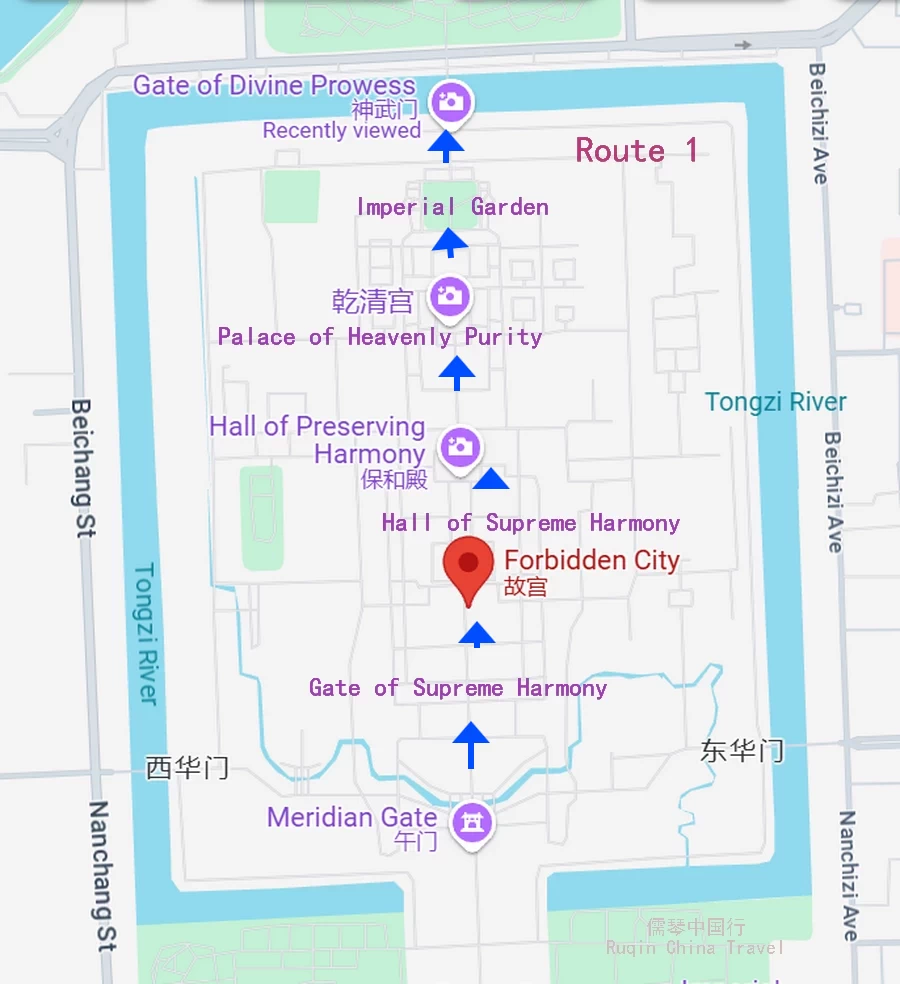
This route takes you through the heart of the imperial palace, passing through key halls and courtyards. It offers a seamless view of the architectural splendor and strategic layout of the Forbidden City.
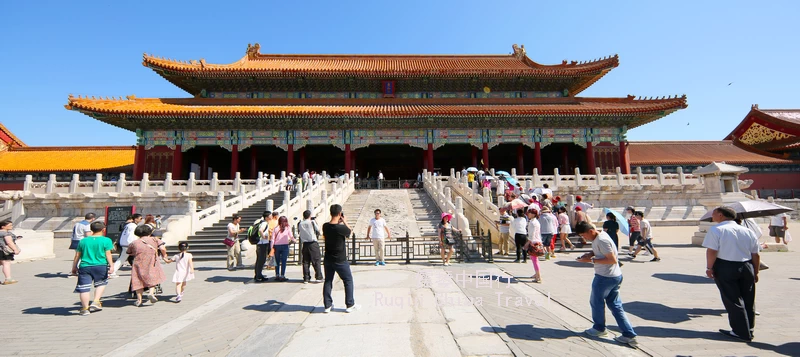
Start at the Meridian Gate (午门), the grand entrance. From there, walk through the Gate of Supreme Harmony (太和门) and into the Hall of Supreme Harmony (太和殿), the largest hall in the Forbidden City. Next, visit the Hall of Central Harmony (中和殿) and the Hall of Preserving Harmony (保和殿), where emperors prepared for important ceremonies.
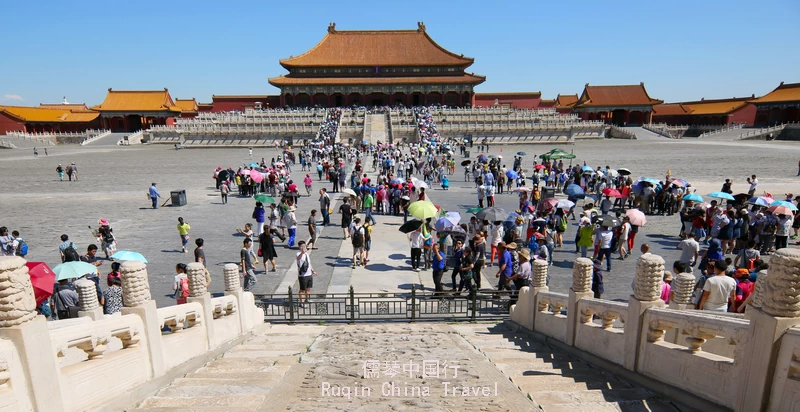
Continue your journey through the Qianqing Gate (乾清门) and into the Palace of Heavenly Purity (乾清宫), the emperor’s residence. Then, explore the Hall of Union Peace (交泰殿) and the Palace of Earthly Tranquility (坤宁宫) before strolling through the Imperial Garden (御花园). Finally, exit through Shenwu Gate (神武门).
This route is perfect for those who want to see the main attractions without feeling rushed.
2) Deep Exploration Travel Route (4 hours)
For those with more time, the Deep Exploration Tour offers a closer look at the Forbidden City’s fascinating history and culture. It’s ideal for visitors who want to go beyond the basics.
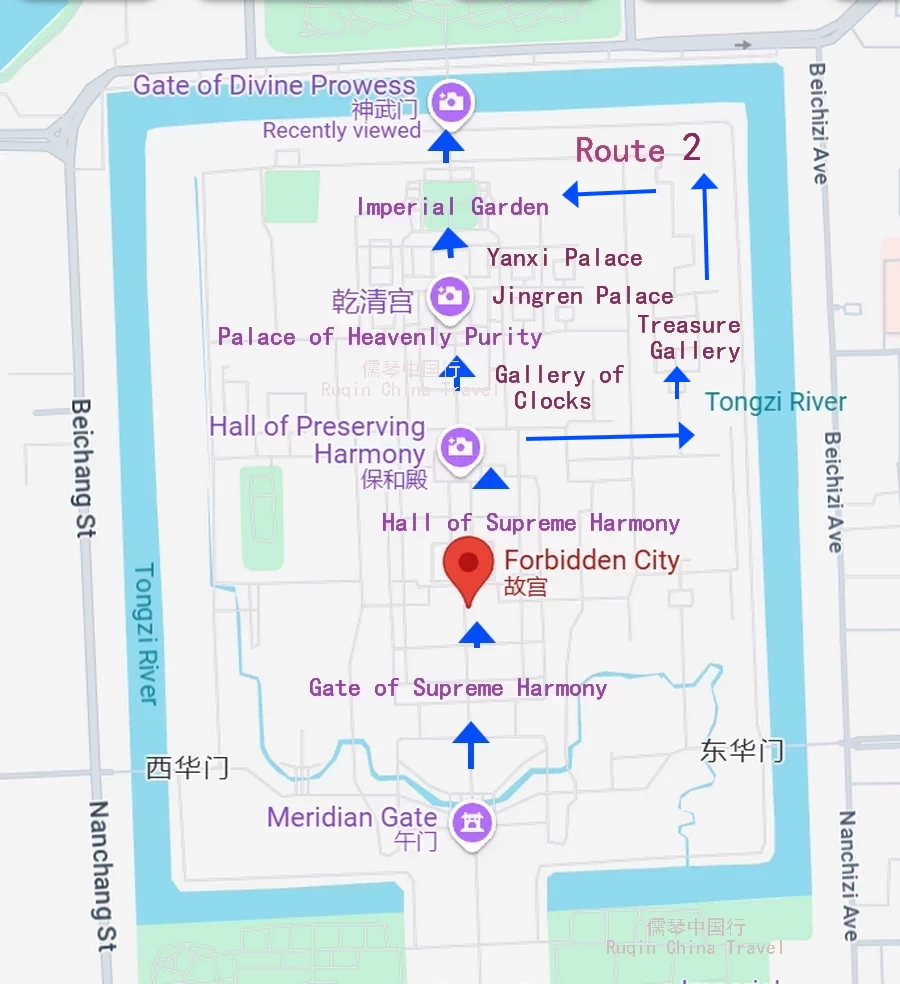
The Deep Exploration Travel Route of the Forbidden City offers an extended tour, including , Jingren Palace, Yanxi Palace, Gallery of Clocks, and Treasure Gallery.
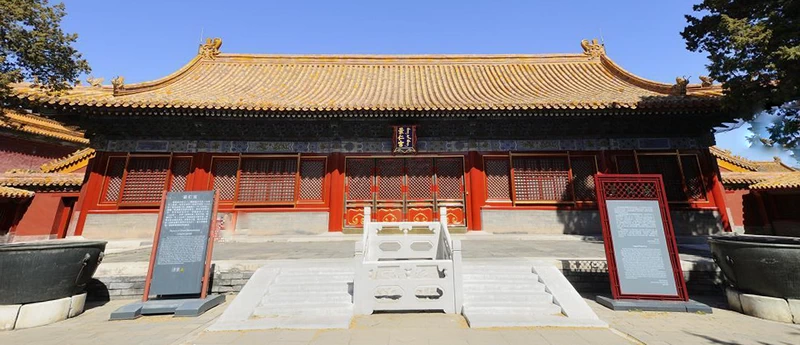
Start with the Central Axis Travel Route and then continue to visit Jingren Palace (景仁宫), where Emperor Kangxi was born and Concubine Zhen once lived. Then head to the famous Yanxi Palace (延禧宫). Both the Ming and Qing dynasties housed consorts in this area. During the Qing Dynasty, Empress Dowager Daoguang’s consort, Consort Tian, and Noble Lady Cheng lived here.
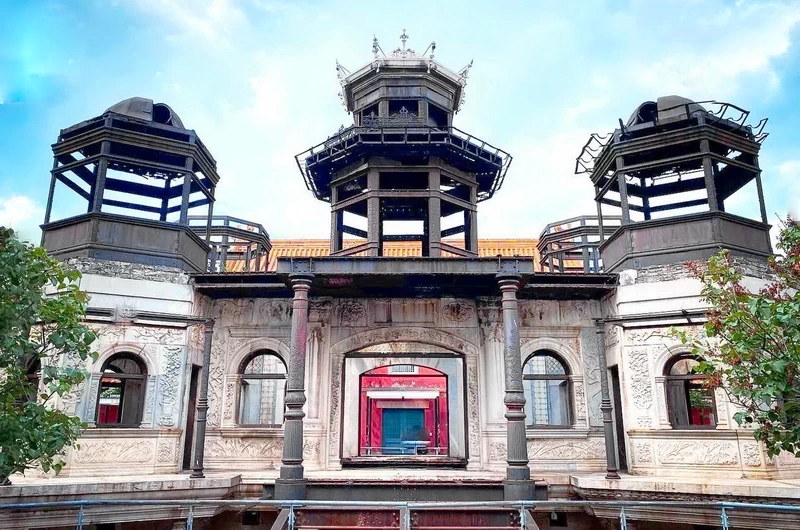
The steel structure buildings of Yanxi Palace (延禧宫) mainly include the Lingzhao Pavilion (also known as the Crystal Palace). It is the only Western-style building in the Forbidden City that uses brick, stone, and metal as its primary structural materials.
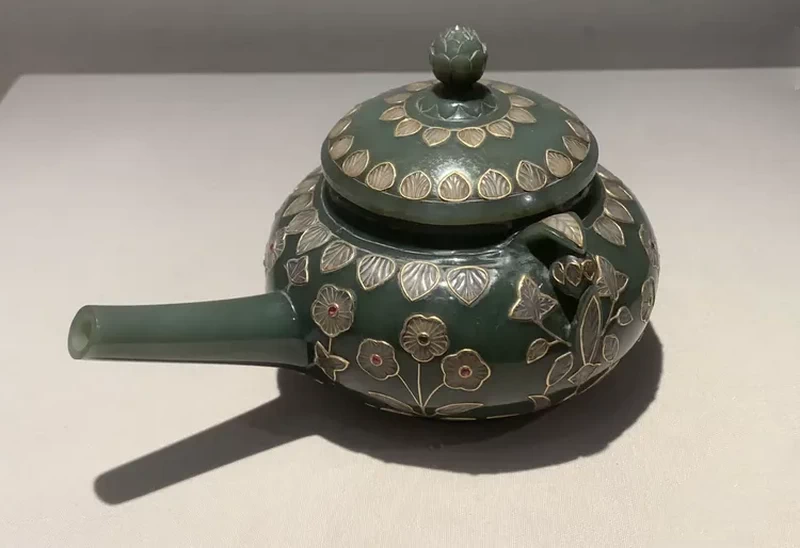
The Gallery of Clocks (钟表馆)and the Treasure Gallery (珍宝馆)are unmissable. They showcase exquisite collections of imperial artifacts. The Clock Gallery features intricate timepieces from Europe and China, while the Treasure Gallery displays precious items, including royal jewelry and rare antiques, offering a glimpse into China’s imperial luxury and craftsmanship.
As you explore, you’ll be transported back in time to when this grand palace was the center of imperial power.
3) Premium Travel Route (6-8 hours)
For history enthusiasts, Premium Travel Route is a must. This comprehensive route offers a deep dive into the Forbidden City’s art, architecture, and history.
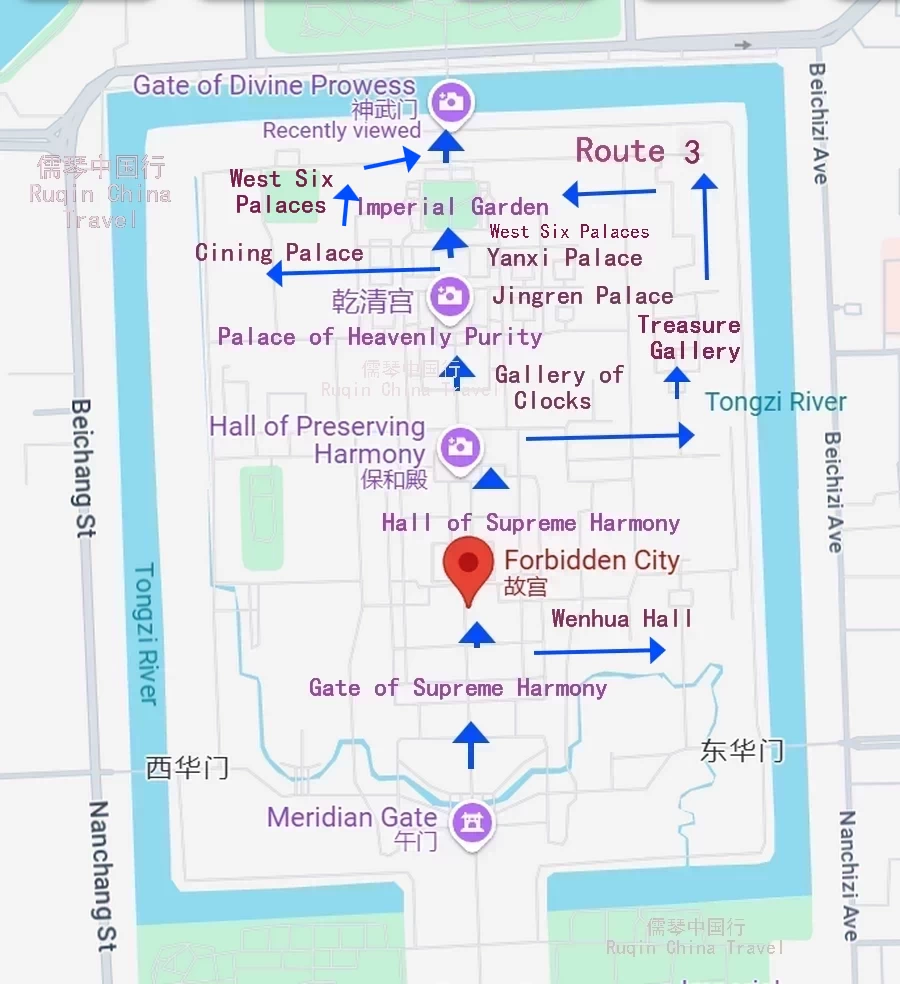
The Premium Travel Route of the Forbidden City offers a comprehensive tour, including Wenhua Hall, Cining Palace, Eastern and Western Six Palaces, the Imperial Garden, Gallery of Clocks, and Treasure Gallery.
Start at the Meridian Gate and Wenhua Hall (文华殿). Once a place for the emperor to conduct ceremonies related to culture and scholarship. The hall’s architecture is a beautiful blend of traditional Chinese styles, with elegant wooden beams and detailed carvings. It stands as a testament to the Qing Dynasty’s respect for intellectual pursuits and the arts.
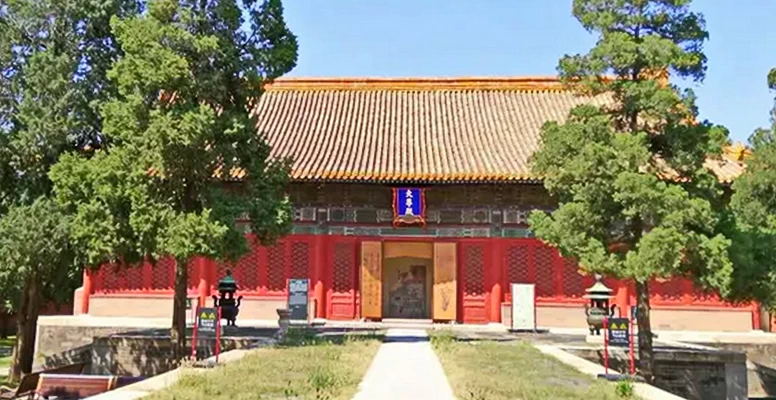
Then, continue the Centra Axis Travel Route central halls. This route takes you through the heart of the imperial palace, passing through key halls and courtyards. It offers a seamless view of the architectural splendor and strategic layout of the Forbidden City.
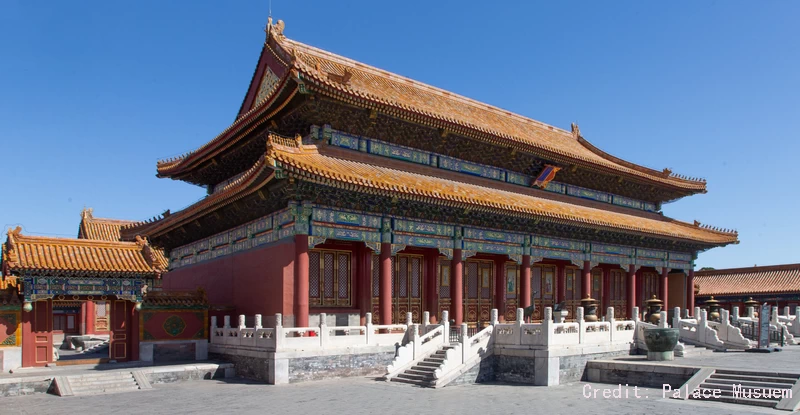
Visit Cining Palace (慈宁宫). Cining Palace was the residence of the Empress Dowager in the Qing Dynasty. The palace is known for its intricate architecture, with graceful interiors and exquisite decorations. In addition to serving as a living space, Cining Palace played an important role in court politics, hosting imperial rituals and ceremonies for the Empress Dowager.
Exploring the West Six Palaces (西六宫区). The Western Six Palaces, similar to their eastern counterparts, housed imperial concubines and served as private living quarters within the Forbidden City. The palaces are more secluded, providing a quiet environment for the royal family. Visitors can wander through these majestic halls and experience the history of imperial life behind closed doors.
Next, head to the East Six Palaces (东六宫区). The Eastern Six Palaces were primarily residences for the emperor’s concubines during the Qing Dynasty. These buildings are rich in history, each palace containing its own unique architectural style and a connection to the lives of the imperial family. Today, visitors can explore the rooms, gardens, and courtyards, gaining insight into the complex hierarchy of the Forbidden City.
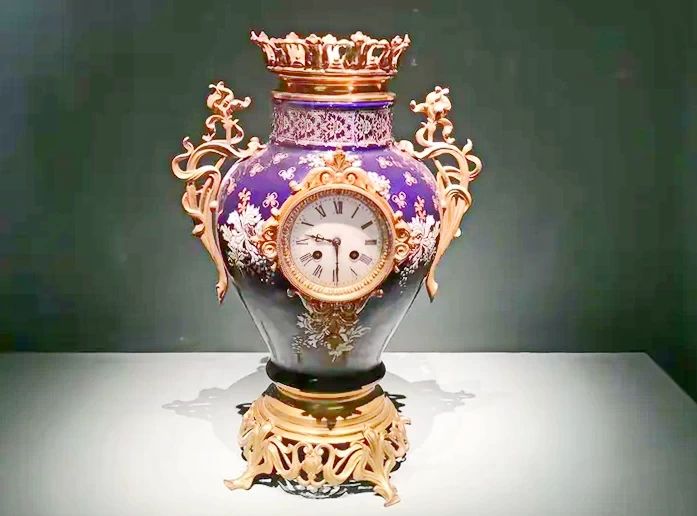
A major highlight of this tour is the Treasures Gallery (珍宝馆) and the Clock and Watch Gallery (钟表馆), where rare and priceless artifacts are on display.
This route is perfect for those who want a rich and immersive experience, uncovering the grandeur and complexity of China’s imperial past.
No matter which route you choose, be sure to end your tour at the Gate of Divine Might (神武门), at the northern end of the Forbidden City. From there, walk up to Jingshan Hill in Jingshan Park, where you can enjoy stunning panoramic views of the Forbidden City—an unforgettable way to conclude your visit.
8.Eating Places inside the Forbidden City
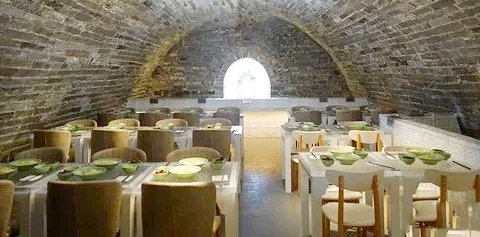
The Forbidden City in Beijing is primarily a historical and cultural site, so with a limited choice of restaurants or eateries inside. However, there are plenty of eating options available just outside the Forbidden City, in the surrounding areas.
Here we’d like to introduce you some eating and drinking places within the ground as well as outside the Forbidden City. Check out Eating Places in Forbidden City for more information.
There are some places to eat in the Forbidden City, more convenient than before, such as Ice Cellar Restaurant, Palace Museum Restaurant, and the Corner Tower Cafe outside the Palace Museum Shenwu Gate, etc.
The food in these eateries is just basic. When traveling to the Forbidden City, you are recommended to bring water and biscuits and other necessities in case of emergency.
9. Forbidden City Turret and Moat
No matter which route you take, make sure to end your tour at the Gate of Divine Might (神武门) at the Forbidden City’s northern end. But don’t stop there!
While many visitors focus on the grand halls and courtyards, fewer explore the turrets and moat surrounding the palace. When you exit the northern gate, you can turn either right or left. Both directions offer stunning views of the city moat and the ancient turrets.
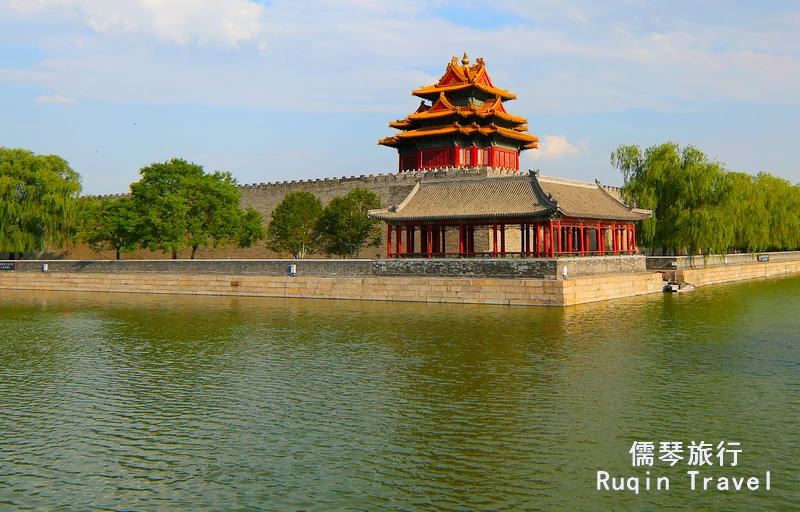
The Forbidden City is surrounded by a massive wall and a wide moat, which served as protective barriers for the imperial palace.
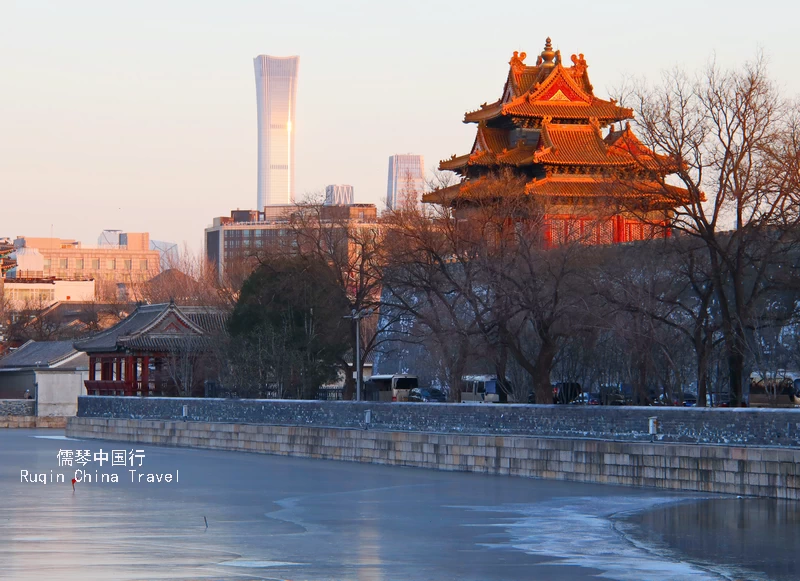
At each of the four corners of the Forbidden City stands a turret, each with a unique design that includes nine girders, eighteen columns, and seventy-two ridges. These turrets are architectural masterpieces, embodying traditional Chinese design and symbolism. For more information check out: Forbidden City Turret and Moat Photo Tips.
10. Enjoy Stunning Panoramic Views of the Forbidden City
From there, walk up to Jingshan Hill in Jingshan Park just north of the Forbidden City, where you can enjoy stunning panoramic views of the Forbidden City—an unforgettable way to conclude your visit.
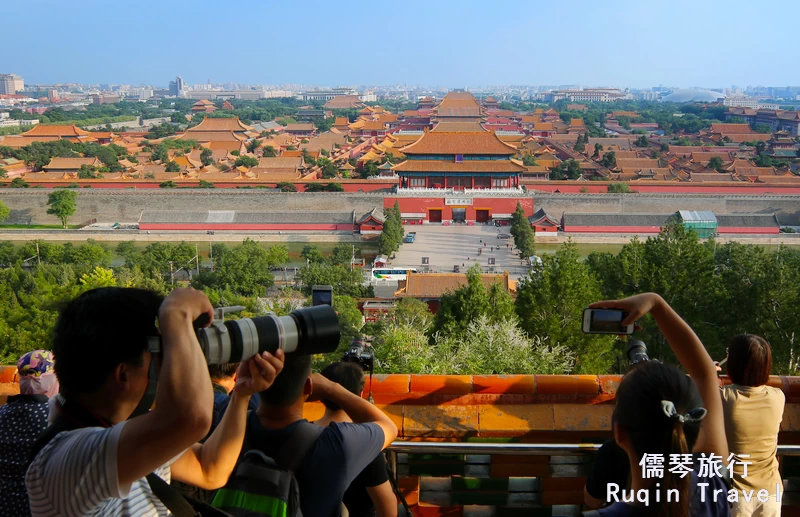
Jingshan Hill is the perfect spot to capture panoramic shots of Beijing. Be sure to bring your camera, as the views from Wanchun Pavilion are unparalleled in the city.
This location is particularly beautiful at sunrise or sunset when the light casts a golden hue over the entire Forbidden City. Jingshan Park is also a great spot to capture the Forbidden City in its entirety, offering a different perspective that’s hard to get from ground level.
11. Nearby Attractions and City Walk
You can include the Forbidden City in your one-day Central Axis City Walk. Start your journey through the heart of Beijing. In 2024, the Beijing Central Axis was added to the UNESCO World Heritage List.
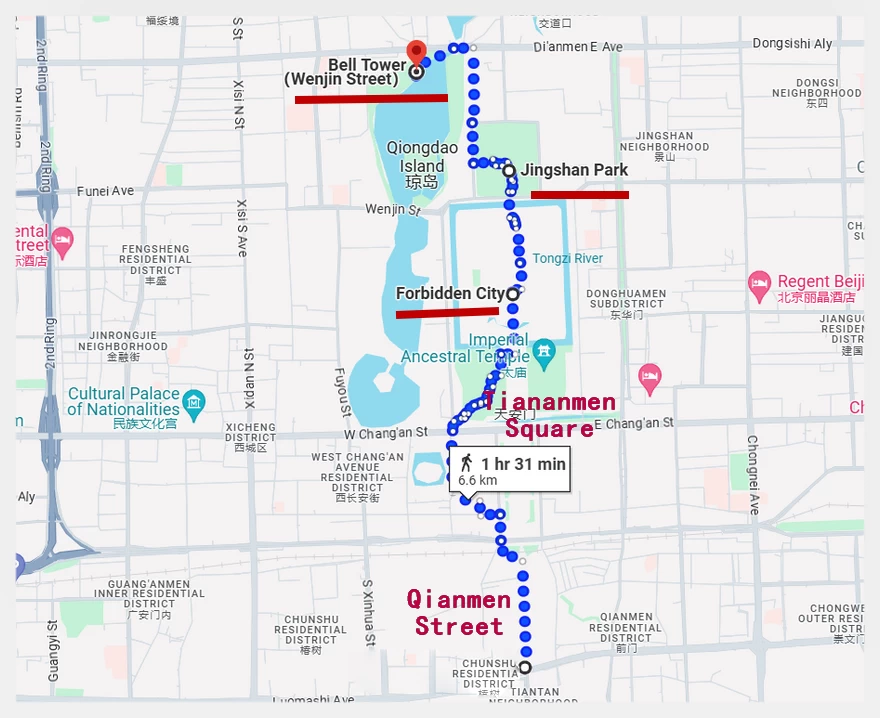
This walking tour takes you from bustling Qianmen Street, through Tiananmen Square, and the grand Forbidden City, all the way to Jingshan Park for stunning panoramic views. After a traditional Chinese lunch, continue along the Axis to the peaceful Wanning Bridge, the iconic Bell and Drum Towers, and finish by relaxing in the vibrant Shichahai area. This tour offers a perfect blend of Beijing’s rich history and modern charm.
Total walking length: about 7 km ( Check out: How to Visit Beijing in One Day )
12. Free Luggage Storage and Baggage Handling Services
When visiting the Forbidden City (aka the Palace Museum), there’s a great convenience waiting for you: free luggage storage and baggage handling services. If you’re traveling with large bags or suitcases (over 20 inches), you don’t have to worry about lugging them around the museum.
Before entering, you can drop off your bags at the Visitor Service Center, located at Duanmen Square, just to the west of the entrance (端门广场西侧). Once you’re done exploring the treasures inside, you can pick up your luggage from Shenwumen (the North Exit Gate) when you leave. The service is completely free, and the transfer is smooth, so you can enjoy your visit without the extra weight. Duanmen Square is situated along Beijing’s central axis, between Tiananmen Square and the Meridian Gate of the Forbidden City.
But don’t forget: while the museum offers storage for big bags, valuable items like your electronics or jewelry can’t be stored, so make sure you carry them with you. Also, certain things like scooters and picnic carts aren’t allowed inside, except for essential items like wheelchairs and strollers.
The luggage storage hours are 8:30 AM to 4:00 PM during peak season (April to October) and 8:30 AM to 3:30 PM during the off-peak months. If you’re picking up your luggage, it’s available from 9:30 AM to 5:10 PM in peak season or 9:30 AM to 4:40 PM in the off-season. The process is simple: just go through a security check, store your bags, and grab your luggage tag. When you’re done, head over to Shenwumen Square ( Your North Exit Area ) to collect your things.
Why does the Forbidden City offer this service? Well, it’s all about protecting the ancient structures. Large bags can potentially damage delicate floor patterns or scratch the walls, so this service helps prevent harm to the museum’s priceless heritage. It’s a thoughtful touch that ensures both your comfort and the preservation of this iconic site.
13. Forbidden City Travel Tips
Audio guides
Audio guides are available in multiple languages and can be rented at the entrance. This allows you to tailor your experience and spend more time at the sites that interest you most.
Passport ID
Foreign visitors need a passport to enter the Forbidden City. Foreign tourists are required to provide the original passport and a passport photo at the ticket checkpoint, where staff will manually enter the passport number for verification.
If foreign tourists do not have their original passport, they can provide a photo of the passport at the ticket checkpoint, and the staff will manually input the passport number for verification.
If foreign tourists forget to bring their passport or ID card while visiting the Forbidden City, they can report this at the police car station and provide the relevant document number for verification. Additionally, other tourist attractions in Beijing may also require a passport or other valid identification, so it’s recommended to carry your passport with you to avoid any unnecessary trouble.
Be respectful of the site
When planning how to visit the Forbidden City, it’s helpful to keep a few cultural considerations in mind. The Forbidden City is not just a tourist attraction but also a cultural symbol of China’s imperial past. Be respectful of the site by following the rules, not touching artifacts, and avoiding loud behavior.
Having a map or guidebook
Additionally, English signage inside the palace is limited, so having a map or guidebook in your language can be useful. If you’re unfamiliar with Chinese history, reading up on the Forbidden City beforehand will deepen your appreciation of the site.
The Forbidden City is a must-visit for anyone traveling to Beijing. Its historical significance, stunning architecture, and cultural treasures make it one of the most fascinating sites in China. By following this guide, you’ll know exactly how to visit the Forbidden City and make the most of your experience. Whether you’re exploring the grand halls or strolling through the imperial gardens, a trip to the Forbidden City promises to be a highlight of your journey to Beijing.
More Forbidden City Related Articles
Forbidden City Night View: A Guide for Visitors
Forbidden City Turret and Moat Photo Tips
Eating Places inside the Forbidden City
👉Explore All Beijing Tours & Excursions with local guides via Viator — an unforgettable, immersive experience
More Beijing Travel Guides
Planning your Beijing tour? Our “Beijing Travel Guide“ section offers essential advice to help you navigate the city like a pro. From transportation tips and local customs to insider recommendations for hidden gems, these travel tips will ensure you have a smooth, enjoyable, and unforgettable experience in China’s vibrant capital. Let us guide you through the best practices for exploring Beijing with confidence!
